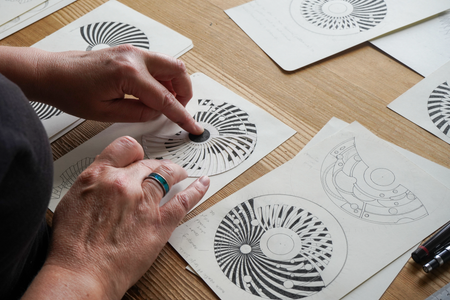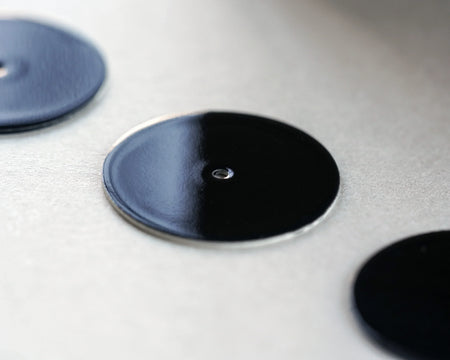100 Years of British Military Watches - Part 3
Mar 12, 2019

Cold war to the present day
1980 was a significant year for British military watches. For the first time in a quarter of a millennium, a British military issued watch was not powered by a mechanical wind up movement, but an entirely new electronic movement commonly known as Quartz. The specifications for this new type of British military watch were laid out in a Ministry of Defence document published in this year, called “Defence Standard 66-4”, the front cover of which is shown below.
Quartz movements offered a quantum leap in accuracy, being accurate to less than a second a day (e.g. +/- 0.1-0.5s/day), compared to mechanical watches which could often lose or gain up to 30s/day. Instead of using a balance wheel spring as an oscillator, to measure out portions of time, running at about 5 Hertz (18000 beats per hour), quartz watches use an electronically operated quartz crystal running at 32000 kilo Hertz. They are also much cheaper and easier to make than mechanical movements. The main downside, practically speaking, for quartz is the need to change the battery usually about every 2-5 years.
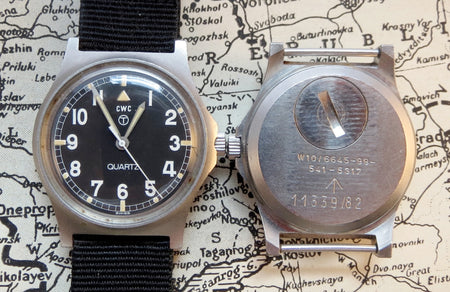
1980 CWC G10 “fatboy” (left), the first ever Quartz watch issued to the British military, and reverse of 1982 issue G10 “fatboy” (right). 1980 was the last year that the non-circled CWC logo was used. Reflecting again on the “fantasy” element of military watch collecting, the 1982 “fatboys” tend to sell for a higher price as this was the year of the Falklands War, Britains last colonial war.
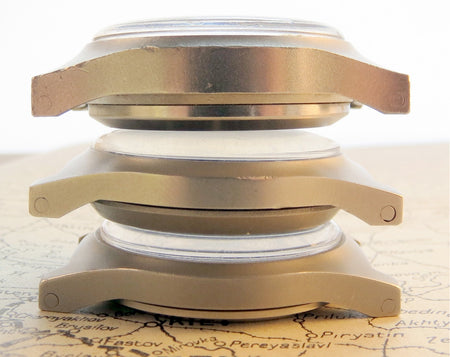
From top to bottom; 1982 “fatboy”; 1985 “medium fatboy”; 1995 (0555) Royal Marines issue CWC G10.
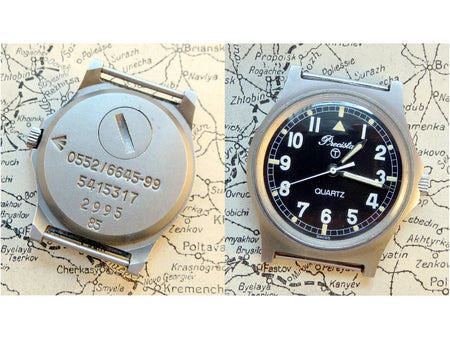
Reverse of a so called “medium fatboy” CWC G10 issued to the Royal Navy (0552) in 1985. Precista G10. Precista has supplied the British military with a number of different watch types, including chronographs and divers watches, but are generally much less common than the CWCs.
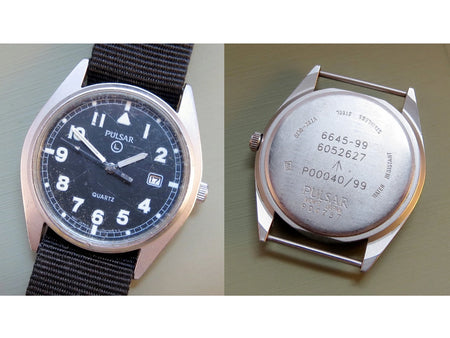
Less common first year (1999) “short hand” Pulsar G10 watch. Reverse of a first year of issue 1999 Pulsar G10 “short hand” version. Note from the serial number (P00040/99) this is only the 40th one ever made.
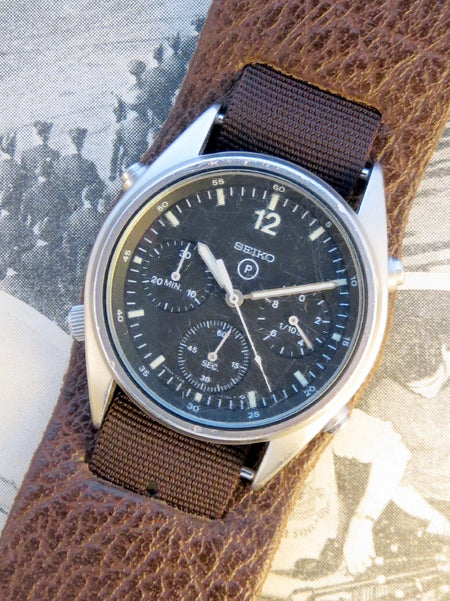
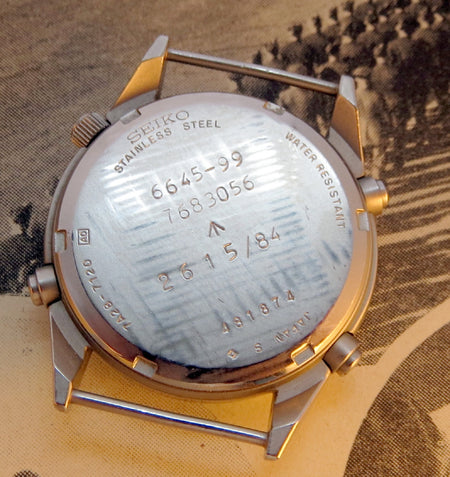
1984 Seiko “Gen 1” RAF issue chronograph, with the worlds first analogue quartz movement the 7A28. Note the circle “P” on the dial denoting the use of the mildly radioactive luminous material Promethium. Reverse of a 1984 Seiko “Gen 1” RAF issue chronograph
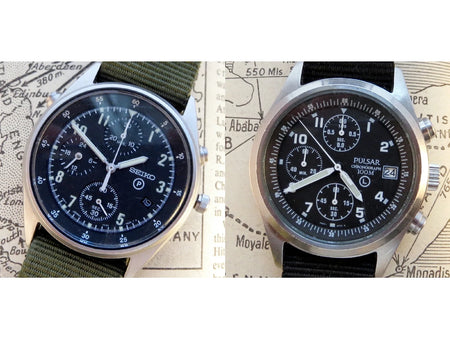
The successor to the Seiko “Gen 1”, the Seiko “Gen 2”, RAF issue chronograph watch. Right: The Pulsar “Gen 2”
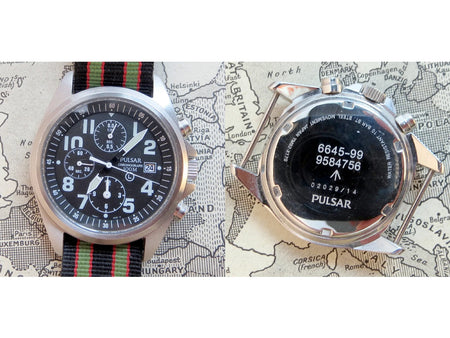
2014 RAF/RN issue Pulsar “Gen 2” chronograph watch. Reverse of the 2014 RN/RAF issue Pulsar “Gen 2” chronograph watch.
